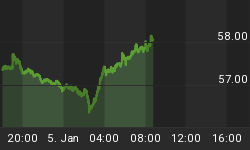Signs Of The Times:
"More Professors are Lured Out of Ivory Towers to Wall Street"
"Demand for new funds offers a chance to test theories, and to make money."
- Wall Street Journal April 21
"1901 was ... speculative demonstration based . . . on the assumption that we were living in a new era; that old rules and principles and precedent of finance were obsolete; that things could safely be done to-day which had been dangerous or impossible in the past. The illusion seized on the public mind in 1901 quite as firmly as it did in 1929. It differed only in the fact that there were no college professors in 1901 who preached the popular illusion as their new political economy."
This valid summary of 1929 was made by Alexander Dana Noyes who was the highly regarded financial columnist with the New York Times.
It could also be worthwhile to recall that in 1998 some of the bigger hedge funds were boasting that they had numerous PhDs on the payroll. Even more assuring of outstanding returns was Long Term Capital Management's boast of having a couple of Nobel Prize economists on board. LTCM is likely the biggest single disaster in financial history and it's too bad that Noyes wasn't around for it -- maybe in spirit.
It wasn't too long after this calamity that interventionist intellectualism had accomplished exactly the right recipe to achieve a sustainable boom. This was celebrated in 2000 as "Goldilocks", which was considered to be a lot more exciting that an earlier theme called "Rosie Scenario".
Then came the tech bust that devastated both stock and corporate bond markets from 1Q 2000 to 4Q 2002.
What's more, Lady Bountiful is again promoting her compelling daughter, as well distinguished, but nevertheless, rent-seeking professors.
However, in the interests of impartiality, some professors can get it right. In 1910 Professor David Kinley provided an example of tearing down the old dogma in his criticism of the conventional wisdom of the 1870's ". . . the action of the independent treasury, as managed by [the] Secretary, favoured speculation rather than legitimate business, by ill timed contractions and expansions which the Secretary caused, so that its influence must, on the whole, be set down as evil."
The instruction for today is that Kinley was likely sympathetic to another US experiment in central banking and it was essential to condemn the old system before promoting the "new" system.
Irony is supreme. At the height of the 1873 mania for stocks and commodities the typical strains developed in the credit markets. This included an inverted yield curve as well as unusually narrow credit spreads. Despite this the leading New York newspaper claimed that the Treasury System, headed by Treasury Secretary Richardson had powers to inflate credit greater than those of a mere central bank.
Because the US was on a fiat currency and not constrained by a central bank with a goldback currency nothing could go wrong.
The contraction that endured from 1873 to 1893 was described as "The Great Depression" from 1884 until around 1940. When it comes to the financial world, one of the longest-running trends is irony.
The reasons that this bull market will continue are similar to those that provided inspiration at the peak of the "New Era" in 1873. Worship of a fiat currency and brilliant central banking contrasts with the former worship of the same but with equally brilliant treasury system.
The following quote from the Financial Post of April 25 more or less says the same thing, but in today's terms.
"Chairman Bernanke has succeeded. The economy has positioned on a sustainable track for manageable expansion: A Goldilocks scenario that is neither too hot nor too cold."















